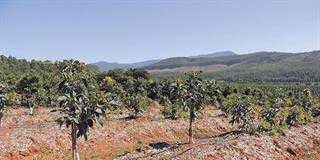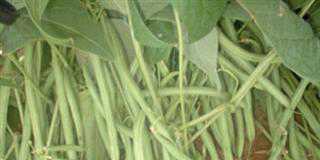Local chicory producers can’t compete with the poor-quality product imported from India by one of South Africa’s best-known instant coffee manufacturers, especially because of the current strong rand, says Chicory South Africa’s agriculture manager Loddie Greyling. With the deregulation of the industry in 1993, chicory can only be cultivated under contract with Chicory SA. But there’s no restriction on importing it.
The negative impact of these cheap imports has more than halved the number of South Africa’s chicory producers from 50 in 2000 to 23 today, with production also taking a knock. “The lowest planting was in 2006 when only 70 000ha were put under chicory, compared to the traditional figure of about 100 000ha,” says Loddie.
“But we’re steadily increasing production to produce as close to the demand as possible and to prevent overproduction.”Despite the halving of the number of producers, Loddie says the fewer farmers are now producing almost as much as was produced in 2000, thanks to improved technology and management.
Irrigation and soil
Chicory production in South Africa stretches over 10 proclaimed areas in the Eastern Cape from Patensie in the west to Peddie in the east and Cookhouse in the north. Two of the areas – the Klipfontein area near Cookhouse and the Gamtoos Valley – are newly identified, with the potential for profitable production under irrigation. Chicory is traditionally a rainfed crop, but after the past few years’ unstable weather, producers realised that irrigation was needed to stabilise the industry, and the two new irrigation areas were identified.
“Yield varies hugely from area to area,” explains Loddie. “The best rainfed yields are obtained along the coast, where the rainfall is higher, although irrigation areas generally yield higher than rainfed areas do. “Despite the serious drought of the past season, the yield was 22t/ha, which was quite acceptable and far better than the 14t/ ha to 15t/ha average of a few years back.”
Soil preparation is also crucial in chicory production. The small carrot-like seeds need a fine, level seedbed and, ideally, sandy soil with a relatively high phosphate level (60mg/kg to 80mg/kg per season) and high potassium level (150mg/kg to 180mg/kg per season). Nitrogen is less important (50mg/kg per season).Loddie says producers were advised to get their soil back to the standard it was at a few years ago by using cattle manure and other methods to rebuild the organic content.
“The humus and organic carbon is very low where lands had been cultivated for a long time in this part of the country. Nematodes are a huge problem, especially if you plant for, say, three years in a row.” Loddie says although fertilisation, weed control and pest control were huge issues up to around 2000, they have since been sorted out. Chicory South Africa always tries to plan at least three years ahead to boost production, he adds.
“Soil conditions and management have a huge impact on yield. The company is constantly doing trials and investigating improved production methods. Research and development is a top priority. “All our seed is imported from France’s Florimond Du Pres and we’re also considering a number of varieties for improved sugar content. Seed is available coated and uncoated, but where the uncoated seed costs about R300/ha, coated seed costs between R1 800/ha and R1 900/ha.”
Processing
In its original state, chicory’s main root was thin and fibrous and unfit for human consumption. But ongoing selection and propagation has led to varieties with large fleshy roots. Chicory is harvested at around one-third of its two-year lifespan. Its production is very labour-intensive, says Loddie, as it requires manual weed control and harvesting, and the producers’ labour costs account for a large part of the input costs.
“When delivering chicory to the factory, farmers are penalised for the amount of soil on the roots, which are also checked for fungal infections such as Thielaviopsis basicola, Fusarium and Candida.”At the processing plant, the chicory roots are washed, cut into small chunks and put in drying ovens at very high temperatures. After drying they’re left for about six weeks to stabilise, as drying the chicory initiates certain processes that first have to settle. After the stabilising period the chicory is roasted. Drying and roasting destroys the root’s bitter taste.
A unique product
“We produce and process a unique product that’s increasingly finding a place in the consumer market,” explains Loddie. “Its health benefits ensure the survival of our industry. Among these benefits are that it’s caffeine-, preservative- and additive-free with a soothing effect on the nervous system.“Chicory complements a wide variety of products, of which instant coffee is probably the most well-known,” he says.
“Other products containing chicory include breakfast cereals like ProNutro, chocolates and even pet foods. As part of a coffee mix, chicory can partially reduce the detrimental effect of the acids and caffeine in coffee. But its most significant characteristic is its ability to enhance and retain the aroma and taste of coffee – and also to strengthen the mixture. “About 90% of South Africans use instant coffee that contains chicory, because, apart from the benefits we’ve discussed, chicory also makes this coffee much cheaper.”
E-mail Loddie Greyling at [email protected].













